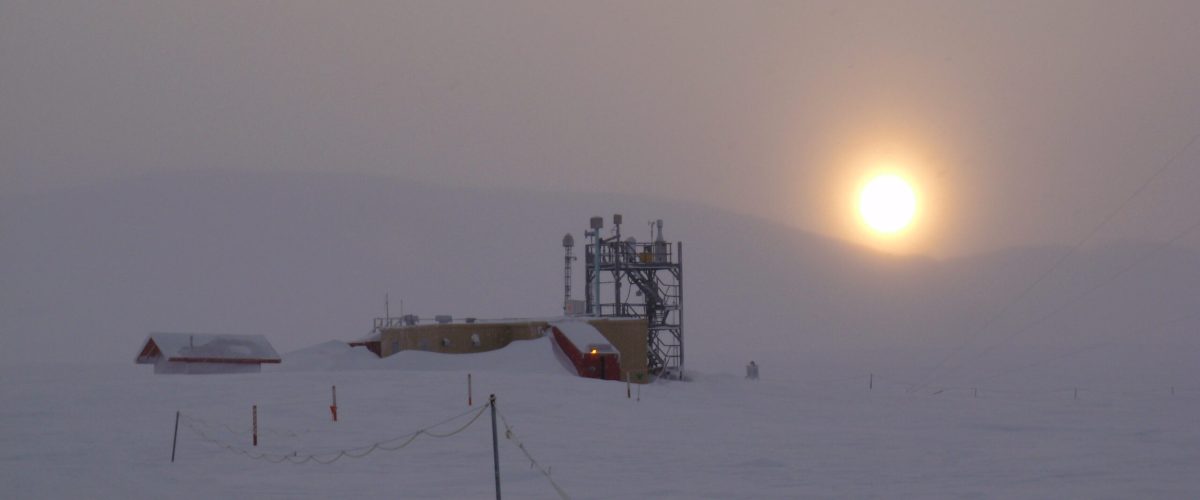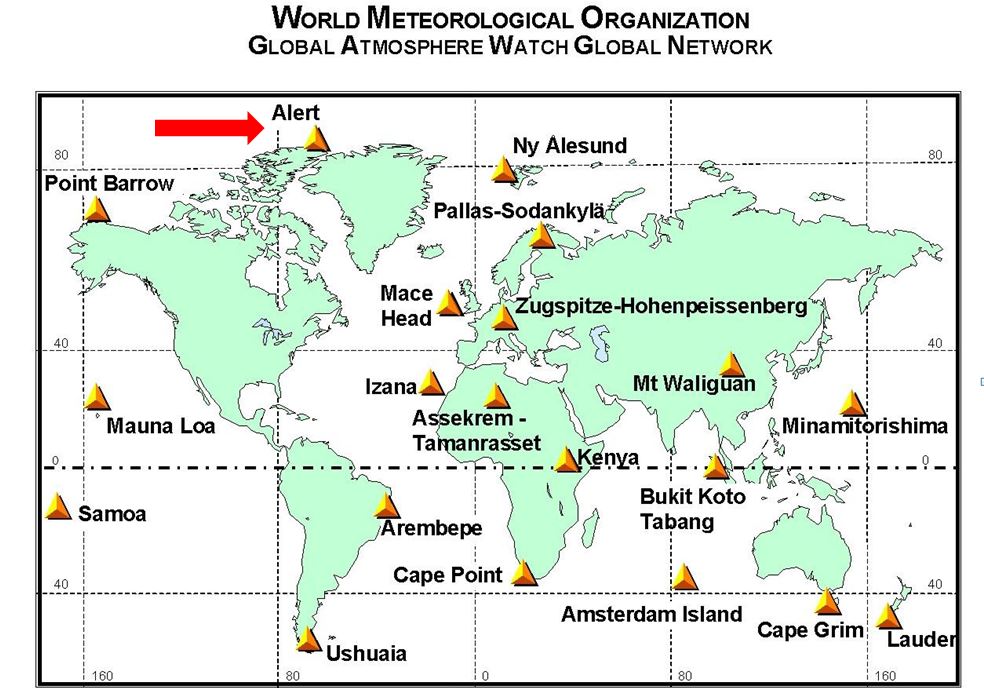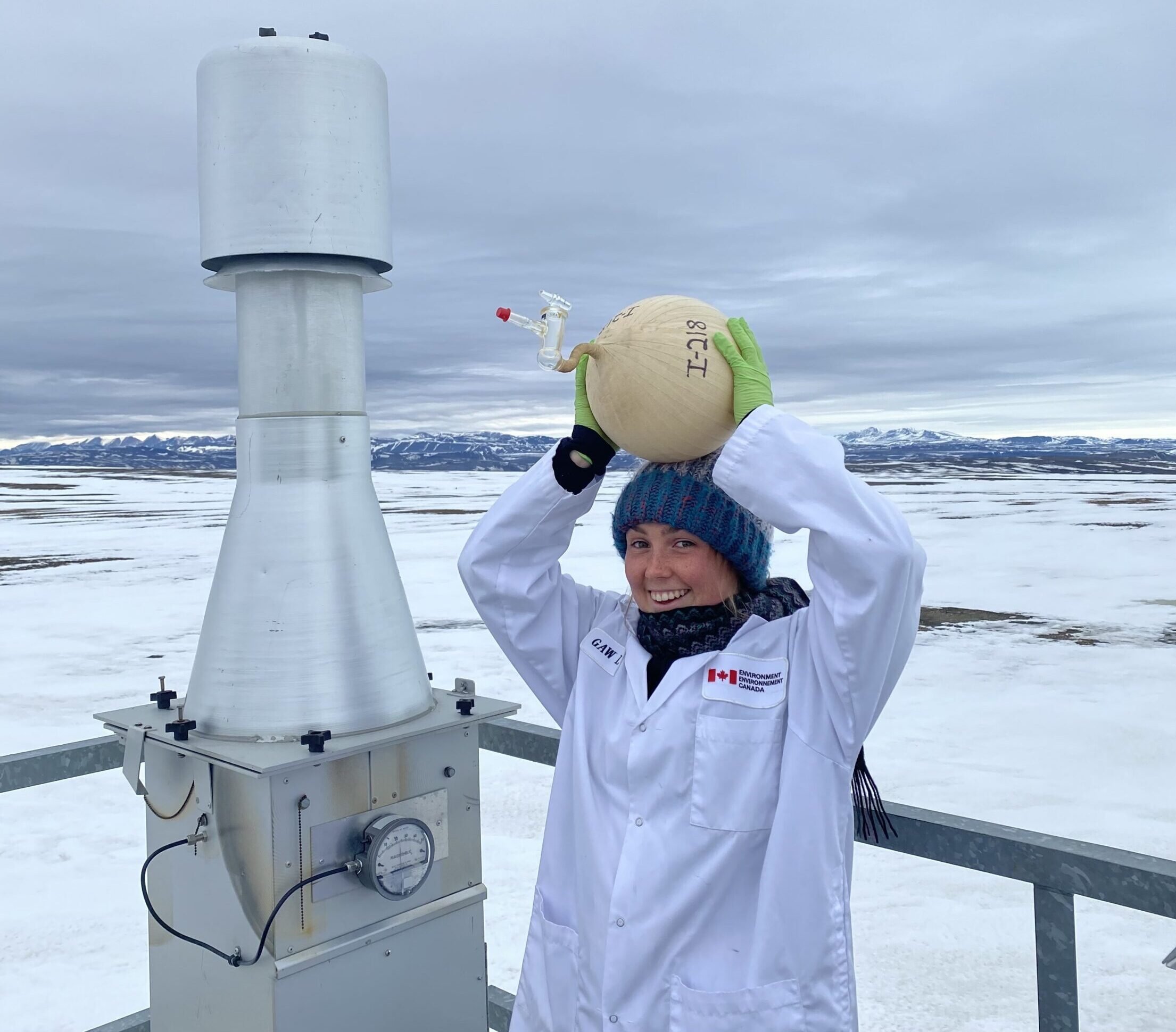Dr. Neil Trivett Global Atmosphere Watch Observatory


Overview
While owned and operated by ECCC, the GAW lab conducts research on behalf of about a dozen international programs. Programs vary in terms of their research objectives, but in general, the focus is on monitoring atmospheric constituents in the Arctic environment. “Atmospheric constituents” means things like greenhouse gases, aerosols, heavy metals, persistent pollutants, microplastics, etc. “Monitoring” involves tracking their concentrations, behaviors, and transport pathways—that is, understanding where they come from and where they end up, whether it be in snow, air, ice, or permafrost.
The GAW lab in Alert is part of an international network of 25 other GAW labs (see pic). This network operates under the Global Atmosphere Watch program, which is coordinated by the World Meteorological Organization. So, most of the programs we run here in Alert also run out of the other GAW locations, and together, this allows for a greater understanding of atmospheric conditions around the world. Data collected from these labs helps inform international climate policy, providing some of the scientific foundation that supports agreements like the Kyoto Protocol and the United Nations Framework Convention on Climate Change.
Programs at the GAW lab
A brief overview of some of the programs we run. I will make separate posts for each with more details =)
The Greenhouse gas sampling program in Alert was initiated by the Meteorological Service of Canada (MSC) in 1975 (long before the GAW lab was built). Originally it started as a small CO2 monitoring program but has since grown!
The program is now run out of the GAW lab and looks at all the greenhouse gases (such as methane, ground level ozone, nitrous oxide, etc.). The program has also expanded to facilitate research for global agencies such as Scripps Institution of Oceanography, National Oceanic and Atmospheric Administration (NOAA), Commonwealth Scientific and Industrial Research Organization (CSIRO), Max Planck Institute for Biogeochemistry (MPI-BGC), etc.
The objective of each agency varies, but in general they are all interested in the concentrations of these gases and how they fluctuate over time.
In Alert, the NCP focuses on monitoring heavy metals (particularly mercury) and a group of chemicals known as persistent organic pollutants (POPs). POPs are used to make things like pesticides, paints, and plastics, while mercury is released through activities such as mining, waste incineration, and fossil fuel combustion.
Although neither mercury or POPs are produced in the Arctic, they are found here in relatively high amounts. The NCP is especially concerned about these contaminants because they bioaccumulate in Arctic food webs, posing serious health risks to our Northern communities (both humans and animals).
Although the mercury program falls under the NCP, it deserves a little blurb of its own because it’s so cool!
In the early 2000s the mercury scientists in Alert discovered “Atmospheric Mercury Depletion Events” (AMDEs). AMDEs occur just after polar sunrise and are characterized by the transformation of gaseous elemental mercury (GEM) to particulate mercury (PM). During this phase transformation mercury leaves the atmosphere and enters our terrestrial and aquatic ecosystems, marking the first step in the bioaccumulation phase.
This is one of the biggest programs at the Alert GAW lab, so I am keen to write a few posts about this one over my term =) stay tuned!
This program aims to quantify the anthropogenic (i.e., human) contribution to elevated atmospheric CO2 levels by comparing the ratio of 14C:12C. By measuring this ratio, they can determine what proportion of the CO2 present resulted from the burning of fossil fuels.
At the GAW lab, a variety of aerosols are studied, with a particular focus on black carbon. Black carbon comes from the incomplete combustion of fuel sources (e.g., oil and gas, coal, etc.) and poses significant issues in the Arctic.
Given its dark colour, black carbon absorbs sunlight and generates heat. In the atmosphere, it warms the surrounding air, and when it settles on sea ice and snow, it reduces the surface albedo (i.e., reflectivity) and accelerates melting. This creates a positive feedback loop, in which more melting leads to more warming, causing even faster melting.
Unlike ground level ozone, which is considered a pollutant, stratospheric ozone is a protective layer of our atmosphere that helps block out harmful UV-B radiation (i.e., the kind that causes skin cancer).
Measurements of stratospheric ozone made at Alert are part of a worldwide network of 200+ currently operational Brewers in 40 different countries. Alert is the northernmost location in this network, while the Amundsen-Scott station at the South Pole is the southernmost. The data from these instruments is collected and analyzed to create a model of the Earth’s stratospheric ozone cover.

